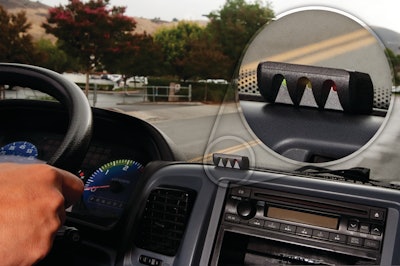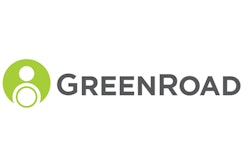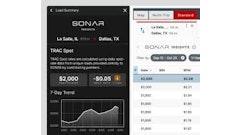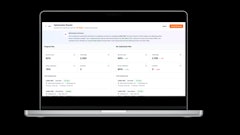
Driver safety, eco-driving, and reducing insurance claims are just some of the things that are important when it comes to a company’s route vehicles. But how can companies maintain and monitor every single driver and truck? Implementing the latest technology advances in telematics can help improve a driver’s safety, boost sustainable operations, and reduce insurance claims too.
Changes in the industry
With the ongoing emergence of cloud computing solutions and online data, industry experts believe the traditional approach for vehicle routing will soon become obsolete. This new Web-based approach makes it easy for companies to seamlessly and instantly stay connected to their data.
“Instead of licensing and locally deploying software, people in the vehicle routing space are much more [open] to cloud services,” says Ken Wood, senior vice president, product strategy, at Descartes.
“These technologies are coming together to form a new approach we like to call the ‘connected fleet,’” adds Tanya Roberts, SVP of marketing at GreenRoad. “With this new trend of the connected fleet, managers now have eyes in every vehicle, and on every driver.”
Integration of fleet management systems such as fuel consumption data, routing, and maintenance information is a current trend that customers are asking for. “Businesses today are looking for one company that is completely integrated with their current operations,” says Cyndi Brandt, vice president of marketing for Roadnet Technologies. This strategy helps a company to effortlessly keep track of all of their records.
According to Will Salter, president and CEO of Paragon, a developing trend in the routing industry is a shift toward centralized routing. “Routing trends are linked to what our customers want,” says Salter.
Some of the hottest products and services
In order to help drivers increase their safety habits, GreenRoad implemented a vehicle feedback device that is placed on the dashboard in the vehicle, with an easy to read color display. This unit displays three colors—green, yellow, and red—in order to tell the driver when his driving patterns are good or risky. One instance of risky behavior would be slamming on the brakes. Depending on the severity of the risky behavior either the yellow light will illuminate or the red light. This information is sent to the managers as a way to monitor each of the trucker’s driving patterns.
“Managers know instantly who’s a red driver and they can focus their attention on that individual instead of being spread so thin when not everybody needs their help or attention,” says Roberts. This service improves efficiency by increasing driver performance and reducing their crash rate “at least 50 percent,” she continues. The decrease in crash rates results in reduced insurance claims.
GreenRoad also offers a service called Idling Manager, which measures and tracks a truck’s idling threshold. A company can adjust the settings and configure the proper thresholds of how long a truck can idle before that information is logged. This service improves the drivers’ MPG (miles per gallon) and is a positive impact on the environment.
“Customers report back that their MPG improved by 10 percent with GreenRoad,” says Roberts.
Another popular piece of software is Paragon’s Resource Manager, which helps to manage a fleet’s transportation. The software helps a manager keep track of the company’s trucks and their drivers’ availability. Gaining access to this information assists with properly calculating driver shift patterns along with truck maintenance patterns, which increases workflow efficiency. Paragon’s Resource Manager can also keep track of an employee’s actual work hours.
Paragon’s route optimization software, Paragon Fleet Controller, is also a useful tool in the trucking industry. This software connects a GPS tracking device along with route scheduling software. It allows a customer and fleet manager to see where the drivers are located and the amount of time the driver will take to get to the destination.
“Action can be taken to warn customers that deliveries might be late or even missed in some extreme cases,” says Salter.
Similarly to units like GreenRoad, PACCAR Parts offers a unique fleet management system called TruckerLink, which allows a company to view information such as real-time statistics and location on a vehicle.
“TruckerLink utilizes proprietary Remote Carrier Switching technology that seamlessly switches the cellular connection between two networks, not just one,” says Tony McQuary, general sales manager for PACCAR Parts in Renton, WA. “TruckerLink tracks the performance of each driver—in terms of operational efficiency—and then allows the dispatcher to take the steps needed to help improve their performance and their bottom line.”
TruckerLink also utilizes geo-sensing in order to better locate a route vehicle and to make sure that the drivers are on time.
Roadnet’s Web-based program, Roadnet Performance Dashboard, displays easy to read graphs and gauges, which gives a user a plethora of information. A manager can customize what information he wants displayed at a glance and compare the actual data with the company’s goals. This data is fully customizable, allowing the user to choose various date ranges down to the type of chart or graph the user wants displayed. It helps a company keep track of their total orders, average route cost, number of stops, number of routes and more, each of which is fully customizable in order to gather useful information, which can be presented with intuitive reports.
Another helpful product is Roadnet Telematics. “Roadnet Telematics is our newest product and boasts significant savings through reductions in idling and wasted fuel as well as in vehicle maintenance costs,” says Brandt. Roadnet Telematics aims to positively influence a driver’s safety habits by monitoring a driver’s seatbelt usage, speeding habits, and other forms of risky behavior.
Looking down the road
One notable trend in the route vehicle industry is the evolution of handheld routing technology, and it’s expected that more drivers will eventually be interacting with handheld technologies. According to Descartes’ Wood, there will be more handheld technology such as smart phones and tablets in the truck along with Wi-Fi and 4G services in order to stay well connected.
Telecommunication connectivity such as cloud computing and open API is also gaining traction fast in the industry. The ability to quickly identify and resolve issues related either to the driver or the vehicle helps maintain a smoother workflow in the industry.
Meanwhile, the industry is also experiencing a heightened focus on ecological driving. “The desire for companies wanting to be ‘green’ and improve their eco-driving is a really key trend,” says GreenRoad’s Roberts. Services such as GreenRoad’s Idling Manager are important programs that support eco-driving. When truckers drive ecologically it not only lowers their carbon footprint, but helps their fuel efficiency as well.
The technology on the market today can help transportation executives pay closer attention to poor driving habits, which not only affect liability and maintenance of route vehicles, but “by keeping your drivers safe and focused on the road, vehicle telematics contributes to the health of your entire business,” says Roadnet’s Brandt.




















